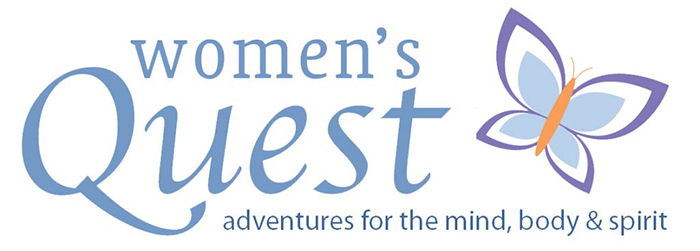Fall Yoga Sequence for Core Strength
by Gretchen Spiro
What is the “core?” Sometimes we think of it as “abdominal”–our belly area. But “core” refers to the musculature that supports the entire torso, our trunk. Front. Sides. Back. A balanced core strength sequence includes movements that address and challenge the circumference of our “middle”.
Effectively training our core strength is best done via whole-body movement–where the arms or legs work in conjunction with activation of our torso. Yoga is ideal for this type of training, as the movement is not isolated to one body part, and is practiced with mindful attention to correct alignment efficient action.
There are more superficial layers of muscles (the movers), and the more intrinsic layers (postural muscles–>stabilizers). When we move our torso, we use the layers of muscles closer to the surface, which are indeed important. Equally important are the muscles that stabilize the torso (the transverse abdominis [TVA] and pelvic floor). While this sequence is not specifically about the TVA, you can work on the deep layers by engaging the torso as if you are drawing in from all sides, and by engaging your pelvic floor muscles, while you do these exercises.
I have outlined a basic sequence of movements that will get you to feel your “core”. You can do this sequence along with a yoga routine that you have established, along with another workout sequence, or on its own. With each of the movements, I have noted a few key points of attention. Be sure to listen to your body and make modifications where necessary. Move slowly, so that you feel the engagement of the layers of muscles, and discover the unique sensation of being YOUR STRONGEST SELF.

Downward facing dog
- Arms reach forward while pelvis reaches up and back from the arms
- Lengthen spine maximally, with your arms straight and fingers reaching forward
- Keep your whole hand flat, with weight at the knuckles under the base of the fingers (not just weight on the back of the hand at the wrist)
- If the spine rounds forward, bend your knees (it’s most important to have the arms straight and the back long)
Downward dog is a good position to return to between the other exercises


Plank, one leg up
- Hands under or slightly forward of shoulders
- Top of buttocks lengthens away from low back towards heels (slight posterior pelvic tilt)
- Keep a taut line between top of head and heels, avoid “sagging” downwards
- If possible, reach one foot off the floor, keeping that leg long
Hold for 10-20 seconds on each side


Knee to nose
- Round your upper back and flex spine upwards (rounding the back up)
- Keeping one leg straight, bend the other knee in towards the nose –hold 5 seconds with the knee as close to the nose as possible
- Return to downward facing dog pose between sides
Do 5-15 each side, alternating sides


Pendant pose preparation
- From your shins, again round your upper back and draw your abdomen in towards your lower back
- Keeping your arms straight and shoulder slightly forward of the wrists, lift your whole body upwards
- Keep minimal weight on the tops of your toes
Hold for 5-10 seconds, do 3x


Side elbow plank
- Maintain a straight line between top of the head and the heels; don’t let the pelvis sag
- Stack the feet one on top of the other (or stagger the feet, if you have trouble balancing) If your bottom leg feels stable, lift the other leg 12” up for greater challenge
- This can be done with the supporting arm straight (from a plank), but being on the forearm is a good variation for those who want to avoid pressure on the wrist
- Make sure your pelvis is in line with your head and feet (pelvis not forward or back in relation to the side line of your body)
Hold 10-30 seconds each side


Boat pose variation
- In the classic yoga pose, the legs are straight. This can put undue pressure on the back and hip flexors, unless the hamstrings are quite flexible. This variation is safer for the back.
- Keep spine lengthened as much as possible, and shoulder down away from the ears
- Draw shoulder blades slightly together and take the gaze on a diagonal above the knees
- Arms parallel to floor. Shins parallel to floor
- Ankles and knees together
- Compact the muscles at the sides of the hips in towards each other and engage the lift in the pelvic floor
Several sets of 30 seconds


Cobra variation – back lifts
- With arms in the “goalpost” position, engage the torso and slightly lift chest off the floor. Keep gaze down (don’t arch your neck to look forward or come up too high)
- Elongate through lower back by bringing the top of the buttocks away from the lumbar area, and keep spine and legs reaching out away from each other
- Lift belly button towards spine and press pubic bone firmly down
- Move slowly, coming up on and inhalation and down on the exhalation
10-15 times


End the sequence with Child’s pose to side
Start in child’s pose, with your hips sitting back on your heels and your head on this floor
Walk your hands to one side, keeping your shoulders level (it’s a side-bend, not a rotation)
Stretch each side of your spine and lower back, taking deep full breaths
With your rib cage pressed against your thighs, your breath will expand and stretch the lower back, back ribs and shoulders
If your knees or hips don’t like this amount of flexion and your hips are above your heels, use a blanket between your hips and your heels, or simply lie on your back and draw both knees into your chest
Each side for 5-10 deep slow breaths
